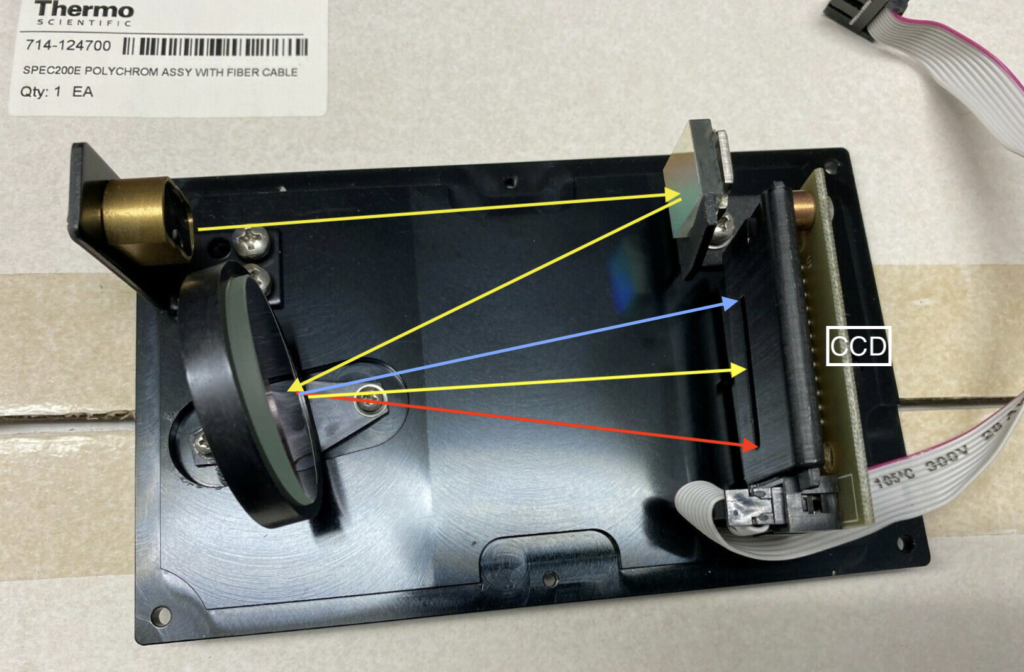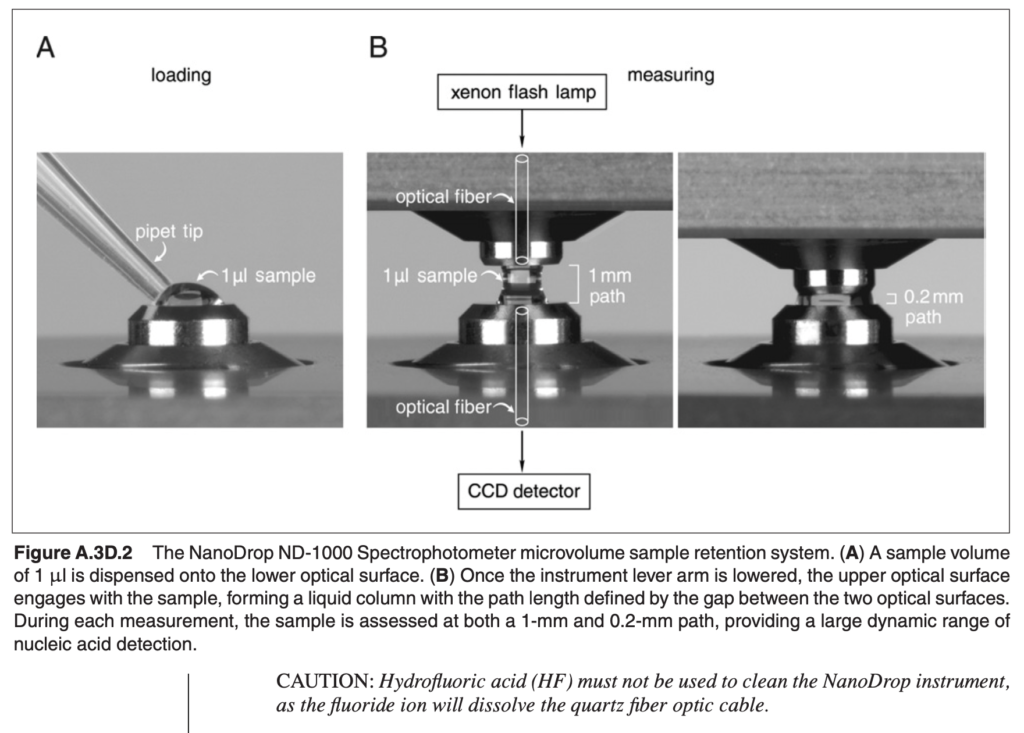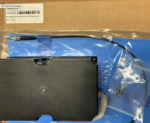Nanodrop Notes
I recently wrote about various UV-Vis spectrophotometers on the substack. As part of this I discussed the Nanodrop and how its architecture differs from other instruments and the advantages this gives.
The CCD is quite possibly a Sony ILX511 this sensor was a popular CCD in a number of spectrometers, I’ve previously designed a small interface for this sensor.
The layout seems pretty simple, the light from the fiber comes in, hits a mirror then is reflected off a diffraction grating and heads to the CCD:

The auction contains a number of other photos, which includes a fiber cable. I assume this fiber (and all the other components) must be UV compatible which will increase the cost. But overall, its a very simple optical system.
Thermo documentation suggests that older Nanodrops use Xenon Flash lamps. These give a relatively broad output. It doesn’t seem like the Nanodrop has any kind of sensor on the output of the lamp (unlike more traditional UV-Vis instruments) this will make taking a blank measurement all the more important. The blank will be compensating for both emission differences across wavelength in the lamp and the absorbance of the buffer.
Newer Nanodrops appear to use LEDs, I assume this must be a combination of UV and visible LEDs to cover the entire spectrum.
Other references show the Nanodrop setup, and suggest that fused silica (quartz) is used:

The Nanodrop patents are pretty informative, and make it reasonably clear that the fiber optical “pedestals” are just the ends of a couple of SMA connectors “typically the end of an industry standard SMA fiber optic connector 10, FIG. 3a (found as connectors on the ends of optical patch cords like p/n P-400-2-UV-VIS from Ocean Optics inc. of Dunedin, Fla.)… For most SMA connectors the approximate 2 mm end diameter can be effectively covered with 2 microliters of water or a water-based solutions.”

A few other pictures from the auction are below, while the auction is listed as Nanodrop monochromator. I suspect this may however be mislabeled, and am continuing to search for Nanodrop teardown images…


